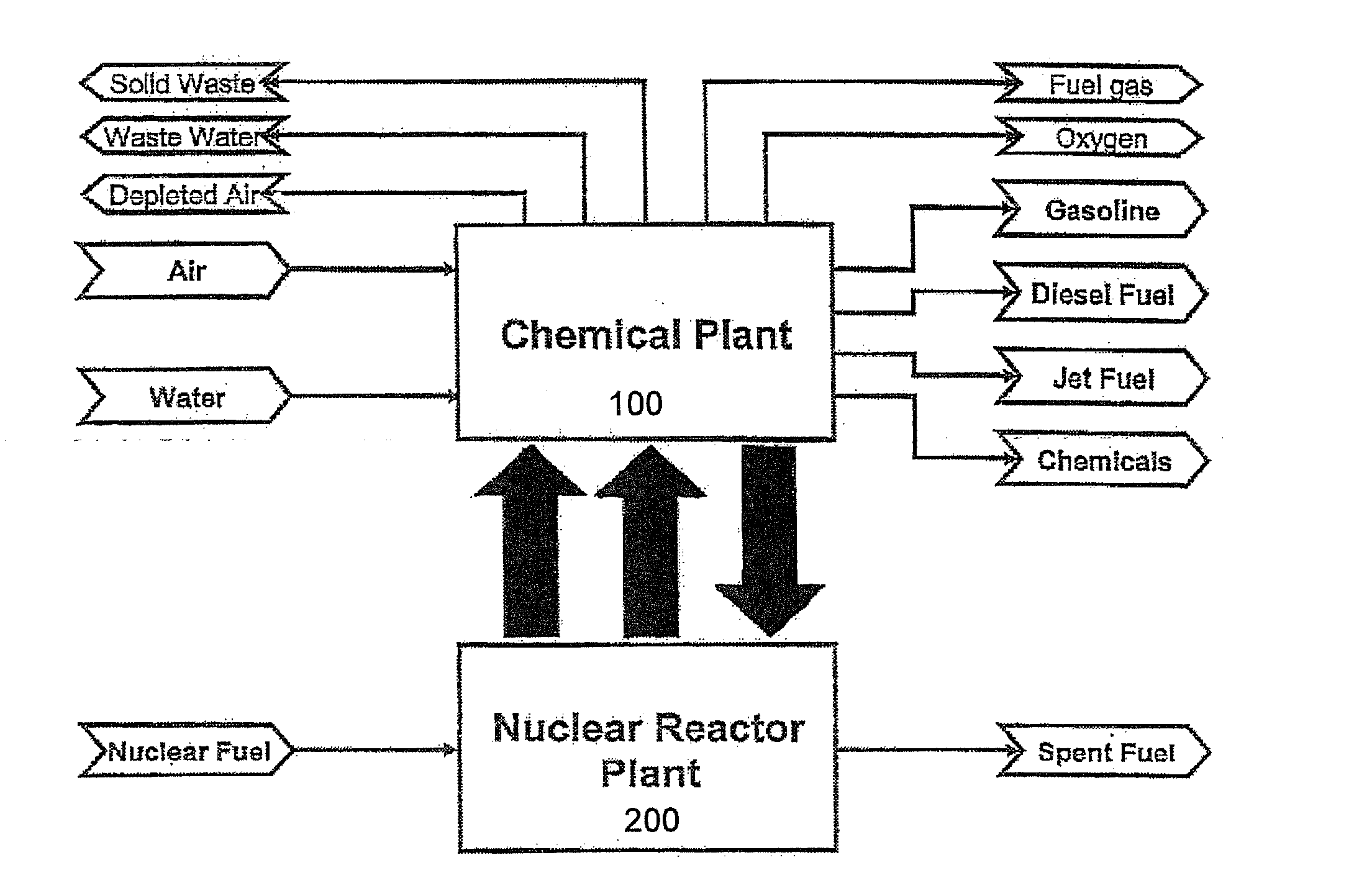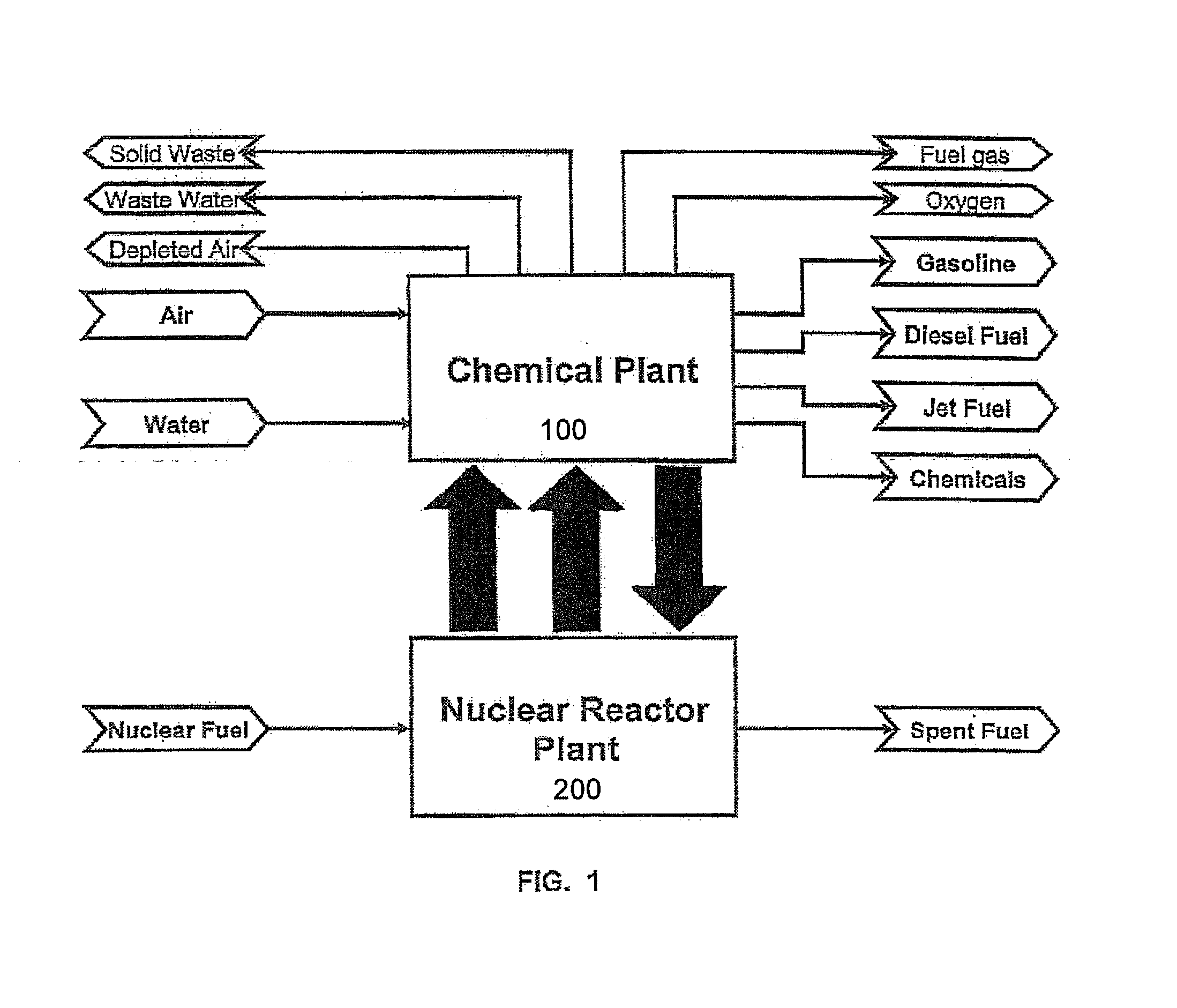Method of producing synthetic fuels and organic chemicals from atmospheric carbon dioxide
a technology of atmospheric carbon dioxide and synthetic fuels, which is applied in the preparation of urea derivatives, nuclear engineering, energy inputs, etc., can solve the problems of affecting the production of plastics, petrochemicals and other chemicals, and the loss of fuel and raw materials, and the loss of electrical power
- Summary
- Abstract
- Description
- Claims
- Application Information
AI Technical Summary
Problems solved by technology
Method used
Image
Examples
second embodiment
[0057]In a second embodiment and as a second illustrative example, FIG. 14 shows stripping step 340 wherein electrolytic cell 342 is a bicarbonate cell 380. Solvent 260 is fed into bicarbonate cell 380 which strips solvent 260 of carbon dioxide gas, produces a gas mixture 396 containing carbon dioxide gas and oxygen gas, and produces hydrogen gas 392. Bicarbonate cell 380 includes an anode compartment 384 containing an anode 382 and a cathode compartment 388 containing a cathode 386 separated by a membrane 390. Membrane 390 may be, but is not limited to, a diaphragm, an ion-exchange membrane, or other appropriate substance. An electrical potential is applied across bicarbonate cell 380. In one embodiment, the electrical potential is from about 1.2 V to 2.5 V, more preferably from about 1.5 V to 2.2 V, and most preferably from about 1.9 V to 2.0 V. In one embodiment, hydroxide cell 350 has a current density of from about 0.5 kA / m2 to 10 kA / m2, more preferably from about 2 kA / m2 to 6 ...
third embodiment
[0060]In a third embodiment and as a third illustrative example, FIG. 17 illustrates stripping step 340 wherein electrolytic cell 342 is a three compartment cell 400. Three compartment cell 400 is divided into three compartments including an anode compartment 402 having an anode 404, a cathode compartment 406 having a cathode 408, and a central compartment 410. Anode compartment 402 is separated from central compartment 410 by a first membrane 412. Cathode compartment 406 is separated from central compartment 410 by a second membrane 414. First membrane 412 may be, but is not limited to, a diaphragm, an anion-exchange membrane, or other appropriate substance. Second membrane 414 may be, but is not limited to, a diaphragm, a cation-exchange membrane, or other appropriate substance. A hydroxide solution 416 is circulated through cathode compartment 406. A bicarbonate solution 418 is circulated through anode compartment 402. Solvent 260 is fed to central compartment 410. Water reacts a...
fourth embodiment
[0063]Referring to FIG. 18 illustrating a fourth embodiment, electrolytic cell 342 that is used in stripping step 340 is a mercury cell 430. Mercury cell 430 includes a compartment 442 having an anode 444 at the top of mercury cell 430 and a cathode 446 that is a pool of mercury at the bottom of compartment 442. Mercury cell 430 is connected to a mercury regeneration reactor 446. Solvent 260 is fed to compartment 442 at anode 444. In one embodiment, solvent 260 is mixed with a bicarbonate solution to improve carbon dioxide recovery. When an electrical potential is applied to mercury cell 430, hydroxide ions react at anode 444 to produce oxygen and water as represented by Reaction 2. Consumption of hydroxide ions at anode 444 reduces the pH which shifts the chemical equilibrium of Reaction 3 and produces hydrogen ions. Hydrogen ions react with carbonate and bicarbonate ions as represented by Reactions 4 and 5, and liberate carbon dioxide (Reaction 5). The products of the anode 444 re...
PUM
| Property | Measurement | Unit |
|---|---|---|
| concentration | aaaaa | aaaaa |
| chemical | aaaaa | aaaaa |
| energy | aaaaa | aaaaa |
Abstract
Description
Claims
Application Information
 Login to View More
Login to View More - R&D
- Intellectual Property
- Life Sciences
- Materials
- Tech Scout
- Unparalleled Data Quality
- Higher Quality Content
- 60% Fewer Hallucinations
Browse by: Latest US Patents, China's latest patents, Technical Efficacy Thesaurus, Application Domain, Technology Topic, Popular Technical Reports.
© 2025 PatSnap. All rights reserved.Legal|Privacy policy|Modern Slavery Act Transparency Statement|Sitemap|About US| Contact US: help@patsnap.com



